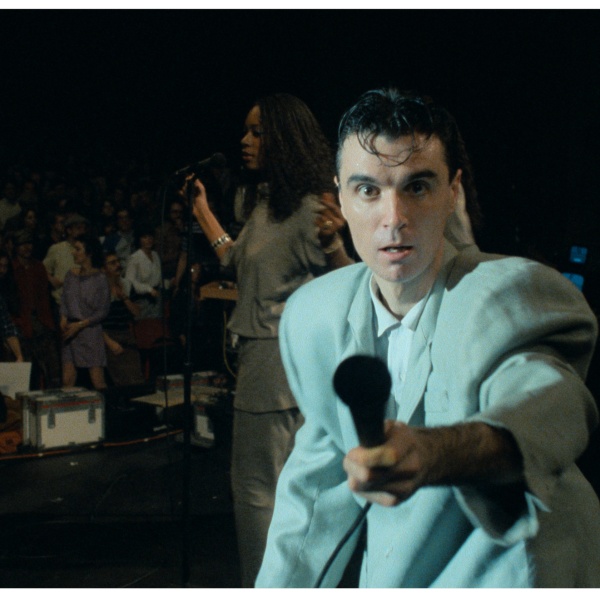Best Picture winner “Oppenheimer” and “Poor Things” were the big Oscar craft winners March 10, each winning three awards. Christopher Nolan’s historical thriller about the atomic bomb grabbed cinematography, editing, and original score, while Yargos Lanthimos’ surreal “Frankenstein” gender-bender snagged costume design, production design, and makeup and hairstyling.
The rest went to “Godzilla Minus One” (visual effects), “The Zone of Interest” (sound), and “Barbie” (song: “What Was I Made For?” by Billie Eilish and Finneas O’Connell, their second win following “No Time to Die”). The lone “Barbie” win was a major disappointment for Greta Gerwig’s billion-dollar blockbuster, which was expected to also take costume design and/or production design for the inventive Mattel-inspired fashion and world-building.
The wins for “Godzilla Minus One” and “The Zone of Interest” were both upsets: Takashi Yamazaki’s Kaiju actioner bested Gareth Edwards’ AI-themed “The Creator,” which won the VES prize, and Jonathan Glazer’s Holocaust drama about the banality of evil (the international feature film Oscar winner) overtook “Oppenheimer,” which won the major MPSE and CAS awards for sound editing and sound mixing.
Meanwhile, Hayao Miyazaki’s “The Boy and the Heron” (Studio Ghibli/GKids) overtook “Spider-Man: Across the Spider-Verse” for animated feature. This marked the anime legend’s second Oscar (following “Spirited Away” in 2002) and the first win for indie distributor GKids after 13 nominations. Although Sony’s “Spider-Verse” sequel was the heavy favorite — a testament to the disruptive vision of producers Phil Lord and Chris Miller, the continuing innovative animation from Sony Picture Imageworks, and its blockbuster success ($681 million worldwide) — the international appeal of Miyazaki’s popularity and original storytelling proved stronger.
Additionally, “War Is Over! Inspired by the Music of John & Yoko” took animated short (executive produced by Sean Ono Lennon and directed by Pixar alum Dave Mullins). It’s an anti-war message about a chess match across enemy lines in an alternate World War I, with assistance from Peter Jackson and his Wētā FX Limited animation division.

Here’s what it all means:
‘Oppenheimer’ Makes IMAX History
Christopher Nolan’s epic about J. Robert Oppenheimer (Best Actor winner Cillian Murphy), the “father of the atomic bomb,” is the first feature shot with IMAX cameras to win Best Picture and Best Cinematography. It represents the culmination of the director’s large-format experimentation with cinematographer Hoyte van Hoytema, who won his first Oscar. “Oppenheimer” is also Kodak’s first 65mm win for cinematography since David Lean’s “Ryan’s Daughter” in 1970. This is a major victory for shooting analog (four of the five cinematography nominees were shot on film), thanks to Nolan and van Hoytema’s strong advocacy and the film’s global box office success in IMAX ($180 million). Additionally, 2023 saw more than 60 movies released on film.
The Dutch-Swedish cinematographer used the large-format IMAX camera to explore the landscape of faces; namely, Oppenheimer’s in color and Admiral Lewis Strauss’ (Best Supporting Actor winner Robert Downey Jr.) in black-and-white. For the first time, Kodak engineered 65mm black-and-white film for IMAX presentation at the request of the director and cinematographer in collaboration with IMAX, Panavision and FotoKem.
Jennifer Lame’s first editing Oscar was a testament to her ability to deftly balance Nolan’s interlocking, subjective POVs. Where Lame brilliantly excels is managing the pace and tension of people walking and talking, particularly talking in rooms. Indeed, the two key framing devices are the parallel political hearings that ensnare both of them: Oppenheimer’s in 1954 to revoke his security clearance and Strauss’ Senate confirmation ordeal in 1959 for Secretary of Commerce.
Composer Ludwig Göransson won his second Oscar (following “Black Panther”), incorporating solo violin (played by his wife, Serena Mckinney) into a series of romantic, manic, neurotic, and horrific musical changes throughout Oppenheimer’s conflicted journey. By contrast, he used a harp to underscore Strauss’s journey. The hardest part was actually composing suites for the parallel courtroom dramas.
‘Poor Things’ Gathered Momentum
There was late-season momentum for “Poor Things” after the BAFTAs — culminating in Emma Stone’s win for Best Actress — so it wasn’t a total surprise that it repeated its wins for costume design, production design, and makeup/hairstyling (although the latter was a major upset over “Maestro” and two-time Oscar-winning prosthetics guru Kazu Hiro).
The costume and production design races were always neck and neck with “Barbie,” yet “Poor Things” arguably had the advantage in ambition and originality. They constructed a retro-future Victorian world from scratch. Costume designer Holly Waddington began with the proper silhouette but then steered clear of intricate patterns for a minimalist look with unconventional styles (including prominent puffy shoulders). Most interesting was her use of latex and plastic as a futuristic embrace of fabrics.
Likewise, production designers Shona Heath and James Price were just as unconventional with their world-building. With a hybrid old school/new school approach, they made use of painted backdrops, rear screen projection, and LED screens (for the ocean liner sea and sky). They built the complete worlds of London, the ocean liner, Paris, and the Alexandria hotel slums on soundstages at Origo Studios in Budapest; for Lisbon, they made composite sets and sky trams at Korda Studios in Budapest.
In terms of makeup/hairstyling, makeup and hair artist Nadia Stacey and her team (three-time Oscar-winning prosthetics makeup designer Mark Couler and prosthetics supervisor Josh Weston) spent the most amount of work on the deformed face of Dafoe’s scientist Baxter, which was influenced by the paintings of Francis Bacon. It took up to six hours each day to apply all of the pre-made pieces and make them seamlessly fit.
‘Godzilla Minus One’ Makes VFX History
In winning the VFX sci-fi battle with “The Creator,” “Godzilla Minus One” made Oscar history as the first Japanese film to win the category for Toho. In addition, as both director and VFX supervisor, Yamazaki became the first director to win the category since Stanley Kubrick with “2001: A Space Odyssey.” “Godzilla Minus One” surprised everyone with its compelling post-war redemption story and became a huge hit ($56.4 million in the U.S., the third highest-grossing foreign-language film in history).
It also helped that Yamazaki campaigned effectively about taking on the studio Goliaths with his small team of 35 artists, who delivered an impressive 610 CG shots on a production budget of less than $15 million, highlighted by the ferocious and highly detailed animated Godzilla and impressive water simulation for the climactic battle.
Sounding Off with ‘The Zone of Interest’
The extraordinary work of sound designer/re-recording mixer guru Johnnie Burn was the most uniquely imaginative of the awards season, despite being overlooked by the CAS Awards. Together with production sound mixer Tarn Willers, Burn created a horror movie in sound to contrast the banal images of the family drama. That meant providing the key narrative on a psychological level with disturbing mental imagery.
After researching everything he could about Auschwitz in 1943, Burn recorded authentic sounds from nature and the mechanical environment, punctuated by atrocities and screams, for the most violent film he’s ever worked on.


